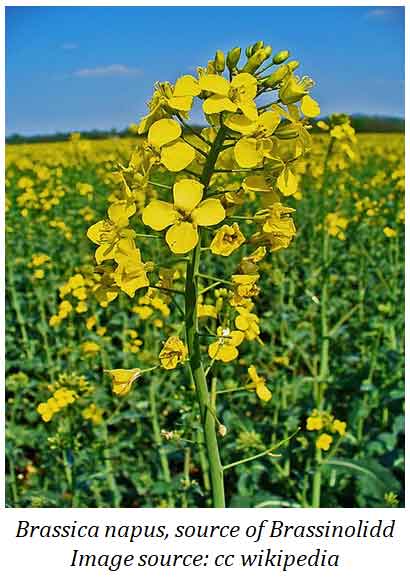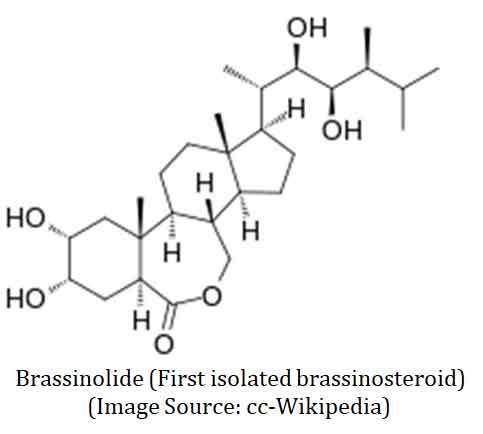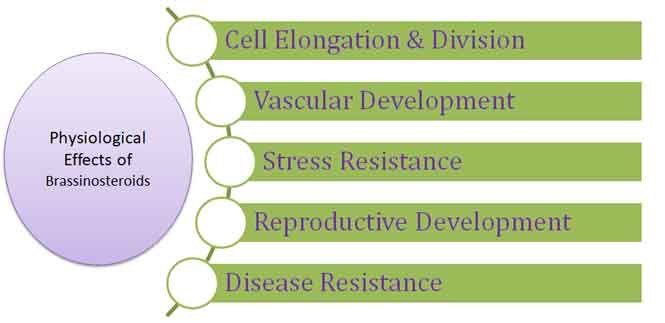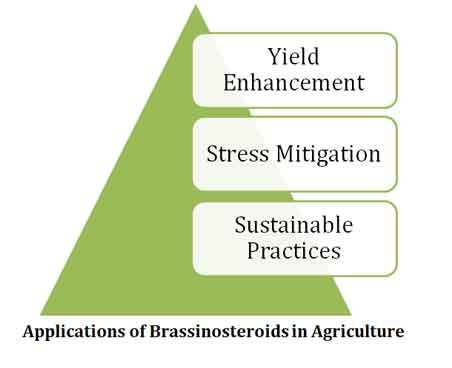What are brassinosteroids?
Brassinosteroids are a class of polyhydroxysteroids that function as essential plant hormones. They are crucial in regulating various physiological processes, including cell elongation, division, and differentiation. These hormones influence plant growth, development, and response to environmental stresses, contributing to overall plant health and productivity. In this post we will discuss what are brassinosteroids and also discusses the functions of brassinosteroids and their applications in agriculture and crop production.
Overview of Brassinosteroids
Ø Brassinosteroids (BRs) are recognized as a sixth class of plant hormones.
Ø They were first reported by rapseed (Brassica napus) pollens in 1970s.
Ø The first isolated and characterized brassinosteroid was Brassinolide (1979).
Ø Over 70 BR compounds have been isolated from plants so far.
Ø Many brassinosteroids are reported to have apoptosis-inducing properties hence they have anticancer potential hence, they have anticancer potential.
Ø In plants, the brassinosteroids are biosynthesised from campesterol.
Ø Campesterol: A phytosterol having the chemical structure similar to cholesterol.
| You may also like NOTES in... | ||
|---|---|---|
| BOTANY | BIOCHEMISTRY | MOL. BIOLOGY |
| ZOOLOGY | MICROBIOLOGY | BIOSTATISTICS |
| ECOLOGY | IMMUNOLOGY | BIOTECHNOLOGY |
| GENETICS | EMBRYOLOGY | PHYSIOLOGY |
| EVOLUTION | BIOPHYSICS | BIOINFORMATICS |
Brassinosteroids Structure:
Brassinosteroids are built around a steroidal backbone like cholesterol, but have small differences. It consists of two parts:
(a). The core: Four fused rings with hydroxyl groups (oxygen and hydrogen) attached at specific points.
(b). The side chain: Varies slightly, but all active forms have a trans (flat) arrangement between two rings and specific oxygen placement on other rings.
Brassinosteroids Examples:
Ø 24-Epibrassinolide (EBL): The most active brassinosteroids found in many plants, including Aegle marmelos.
Ø Brassinolide (BR): The first isolated brassinosteroids from the pollen grains of the rape plant (Brassica napus).
Ø Castasterone: A brassinosteroid found in some chestnut species, such as Castanea crenata.
Ø Dolichoterpenoids: A group of brassinosteroids with a more complex structure than other types. They are found in some legumes, such as soybeans.
Ø Polypodin B: This brassinosteroid is found in ferns, such as Polypodium vulgare.
Functions of Brassinosteroids
(1). Cell Elongation and Division
Ø Brassinosteroids promote the elongation and division of cells, which are vital for plant growth.
Ø This includes the expansion of stems, leaves, and roots.
Ø They work with auxins to promote cell elongation.
Ø It also has an unclear role in cell wall regeneration.
Ø They can acceleration senescence in dying cells.
(2). Vascular Development
Ø They are involved in the development of vascular tissues
Ø Researches has demonstrated the active BR signalling in the early stages of vascular bundle differentiation.
(3). Stress Resistance
Ø Brassinosteroids enhance the plant’s ability to withstand various abiotic stresses such as drought, salinity, and extreme temperatures
Ø They modulate stress-responsive genes and antioxidant activities to overcome stresses.
(4). Reproductive Development
Ø Brassinosteroid hormones can also support the reproductive process in plants.
Ø They can influence flowering, fruit set, and seed development and hence they are influencing crop yields.
Ø BR is necessary for pollen elongation for pollen tube formation.
(5). Disease Resistance
Ø Brassinosteroids improve the plant’s immunity against pathogens by activating defense mechanisms.
Ø This property can be utilized in agriculture for reducing the use of chemical pesticides.
Brassinosteroids Applications in Agriculture
Yield Enhancement
Ø Brassinosteroids are used to increase crop yields by promoting growth and development.
Ø This is particularly beneficial for staple crops like rice, wheat, and maize.
Stress Mitigation
Ø Application of brassinosteroids helps crops better tolerate adverse environmental conditions, ensuring stable production in variable climates.
Sustainable Practices
Ø By enhancing growth and resistance naturally, brassinosteroids reduce the dependence on chemical fertilizers and pesticides, supporting eco-friendly farming.
Challenges and Future Prospects
Ø While the benefits of brassinosteroids are clear, challenges such as production costs and large-scale application need to be addressed.
Ø Ongoing research aims to develop cost-effective methods for synthesizing and applying these hormones, making them more accessible to farmers globally.
In summary, brassinosteroids are vital plant hormones with significant potential to improve agricultural productivity and sustainability by enhancing growth, stress resistance, and disease management.
<<< Back to Plant Physiology Notes
| You may also like NOTES in... | ||
|---|---|---|
| BOTANY | BIOCHEMISTRY | MOL. BIOLOGY |
| ZOOLOGY | MICROBIOLOGY | BIOSTATISTICS |
| ECOLOGY | IMMUNOLOGY | BIOTECHNOLOGY |
| GENETICS | EMBRYOLOGY | PHYSIOLOGY |
| EVOLUTION | BIOPHYSICS | BIOINFORMATICS |







